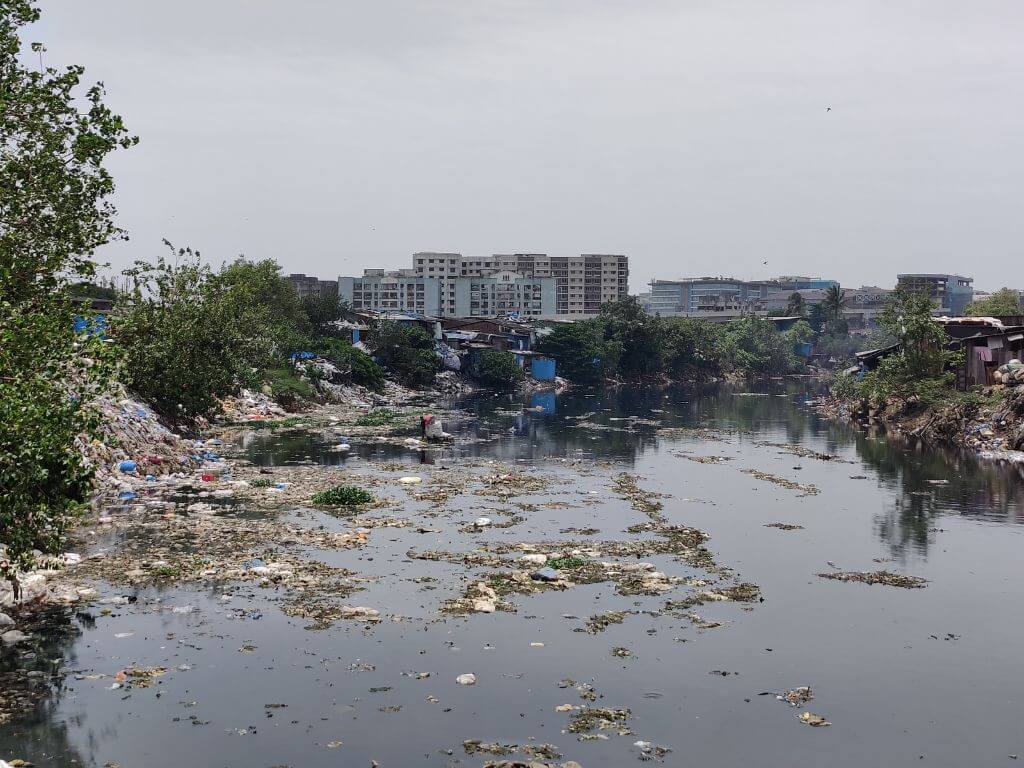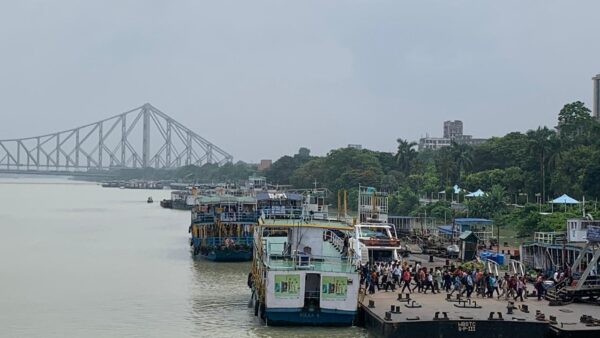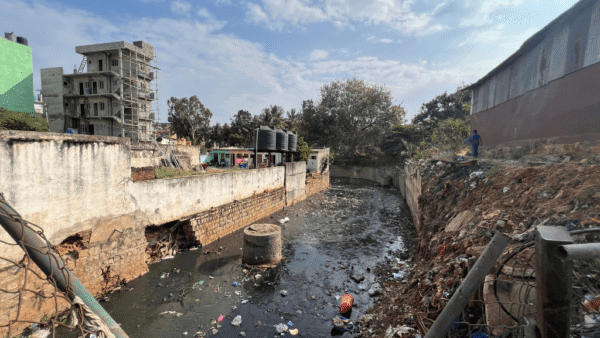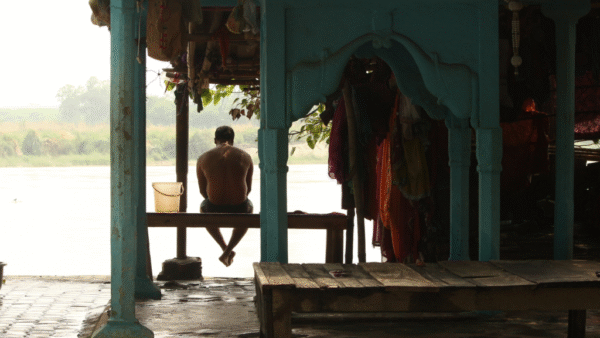The map of Mumbai shows at least four rivers snaking down from its forests but a small way into the city, they seem to be fighting for space amidst the grey and brutal concrete of the city. Choked with filth and untreated sewage, the rivers have reduced in width, turning into lifeless and dying waterbodies, their floodplains inundated after every heavy rainfall. The once free-flowing Mithi has seen desilting and restoration work after the severe flood in July 2005 but study reports have shown that it is insufficient and, in many instances, ill-advised as detailed in this essay.
A report[1] states that the rapid concretisation in Mumbai combined with the outdated 150-year-old storm water drains have had a growing influence on how Mithi floods. Haphazard human interventions to landfill around the Mithi combined with increased precipitation due to Climate Change have greatly affected how the river (mis)behaves.
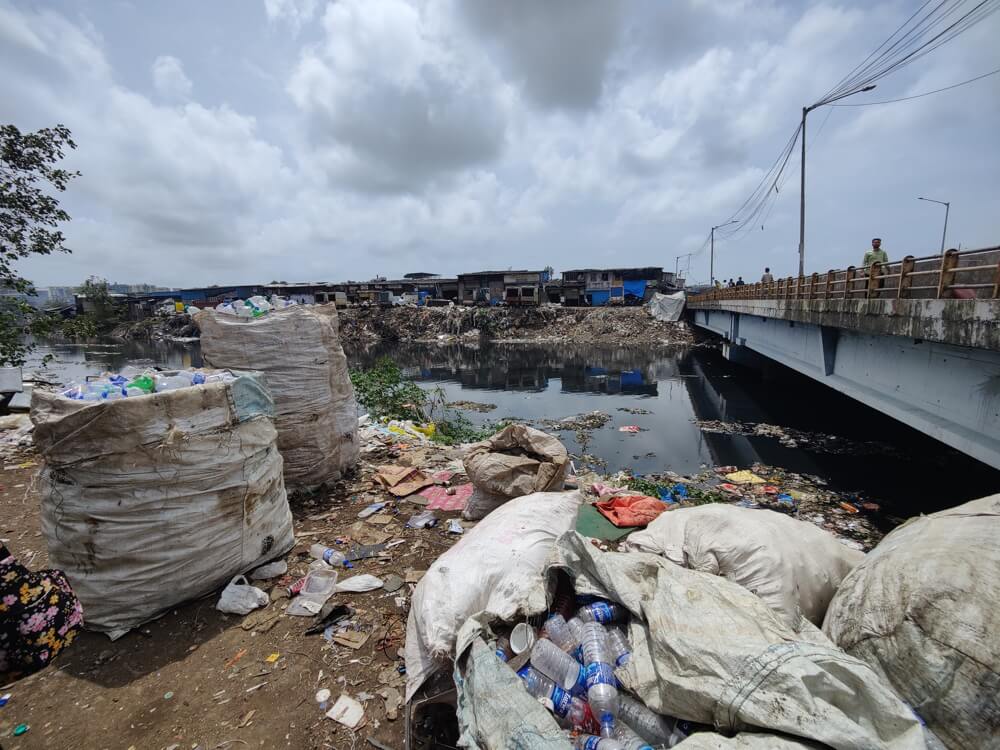
Photo: Shivani Dave
The sixth report of the Intergovernmental Panel on Climate Change (IPCC) warned last year that Mumbai will experience the highest rainfall among India’s metropolitan cities. This along with the threat of sea level rise puts the life of the communities that live along Mumbai’s water bodies at peril.[2] Soak[3], the visualisation of Mumbai as an estuary, outlined Mumbai’s annual “war against the monsoon” and its “poster child” for the same — Mithi. It drove home the point that Mumbai, an island city, should continue to be one, accommodating the sea instead of trying to keep it out. Ultimately, the Mithi does what it has to do – it swells in the monsoon, inundating the areas around it.
Bandra Kurla Complex, which was built over the Mithi’s estuary, continues to be “developed” while the river has seen interventions like the widening of its mouth. “The authorities want to widen the river, blast open the mouth of the sea. This is where the estuary of the river lies at BKC,” laments D. Stalin of Vanashakti, a non-governmental organisation working on environmental issues. If the river is widened to allow the water to flow out, he reckoned that sea water would flow in too.
The role of estuaries in mitigating the impacts of sea level rise cannot be ruled out. Estuarine ecosystems absorb both storm and tidal water to play a crucial role in mitigating urban floods. And yet, land reclamation which upturns the city’s mangrove forests, construction of embankments or sea walls in intertidal areas of the city continue. Not just that, the city’s flood mitigation measures have given way to newer ways of creating real estate that can only compound the speed at which the city may sink.[4]
The pollution, concretisation and encroachment that form the Mithi’s fate have left their impact on the lives of many around the Mithi. The city’s indigenous community, the Kolis have had to face the loss of their fishing lands in the creeks where the fish once bred, making them venture further into the sea. The slow and persistent wiping out of the mangroves along Mumbai’s coast has wiped out entire ecosystems that thrived there.[6]
People’s conversations around the Mithi continue to revolve around anticipation, fear, tolerance and endurance every monsoon — especially for those living and working on its banks. Every year, there is fear of flooding. The river appears to be fighting for its life but, predominantly, the city has found ways to disconnect with it. Those who live around the polluted Mithi, partly dependent on it but fearful of it too, perceive the Mithi as a bane, its smelly banks and filthy waters hardly offering any solace.
Question of Cities brings you voices of people who live along the Mithi and have seen the river turn into Mumbai’s drain.
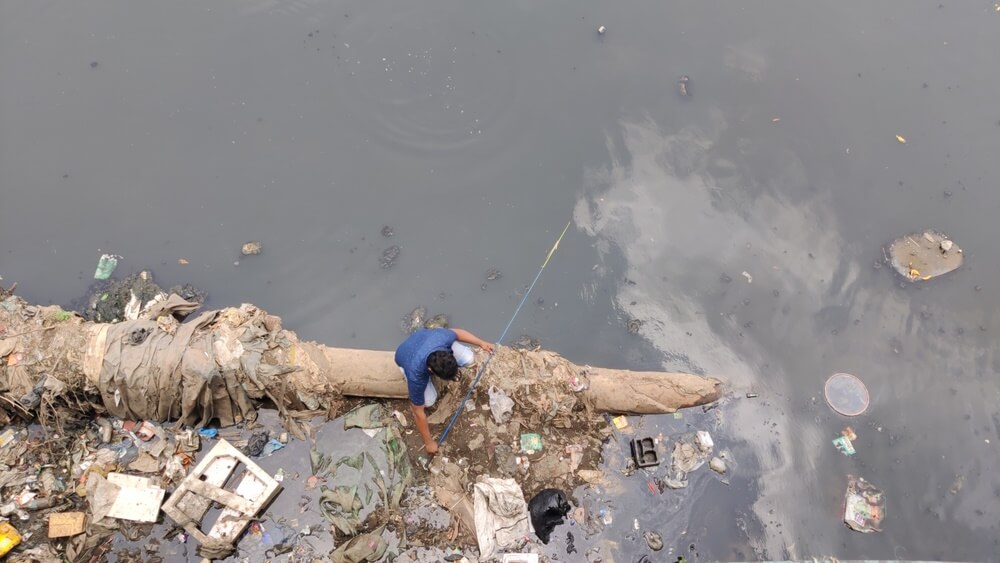
Photo: Jashvitha Dhagey
Irfan Khan, 32
Fisherman and hamaal (hand cart loader)
I live and work around the river. I have experience in fishing in rivers in my home town in Sidharth Nagar district, Uttar Pradesh. But, this is different — this doesn’t even look like a river. People treat it like a nullah but what can I do? I try to catch three to four kilos of silverfish every day to sell in the settlement by Air India Road. People don’t always want to go to the market because it’s far and more expensive. I spend all afternoon here and it’s difficult standing in the sun. I am lucky if I manage to catch something after a long day. Sometimes, I also find stuff such as furniture in the river, I sell it to earn a few more rupees.
I share a rented room on the banks of the Mithi. It floods every monsoon but rents are cheaper in rooms by the river. The river is notorious for flooding in the monsoon which also brings a host of problems such as mosquitoes and an all-pervasive stench. The water rose by three feet when the banks flooded this year, but nothing compares to what I went through in 2005.
I slept on the roof for four days, without food and little water until the rescue teams came with boats. If they don’t clean the Mithi properly, there will be a repeat of the 2005 floods. So many houses were washed away then; I wonder how many more it will take if it happens again. I left behind my parents, wife and two children in my village in Uttar Pradesh to come to Mumbai for work. I load and unload trucks at Chindi Bazar in Kurla every evening but I have to share the wages with others who work with me.
During a good month, my earnings go up to Rs15,000, otherwise I have to manage with around Rs 10,000. I send home the money left after paying rent and daily expenses. I can work as farm labour in UP but I will earn only Rs 300 a day. The earning is better in Mumbai but living here is difficult.
Recently, the government widened the river but left a mound of mud blocking the water flow. Everyone from the settlement throws all kinds of garbage into the river. Where will the water go if not into our homes?
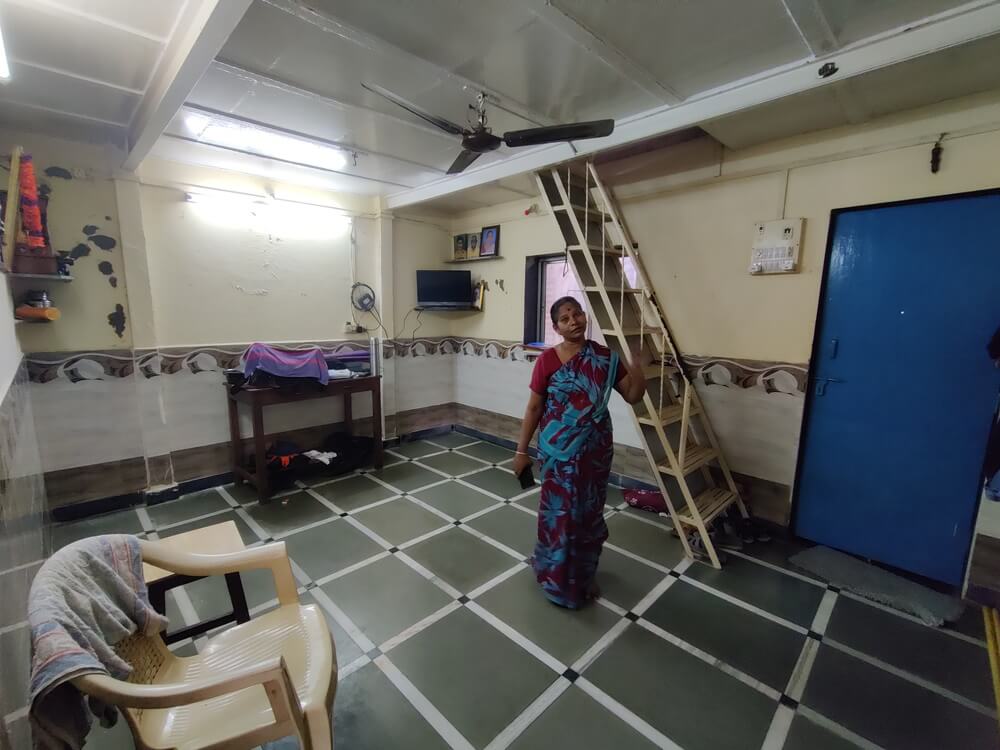
Mithi.
Photo: Jashvitha Dhagey
Sujata Suresh Kakwal, 60
Resident of Samartha Chawl
There have been times when we woke up half-submerged in water while sleeping on the floor at night. That’s when we decided not to live on the ground floor. However, things were different this year. The Brihanmumbai Municipal Corporation (BMC) installed a pump to flush out water from our area, and it has worked on most rainy days. But this didn’t stop the water from filling up to one-feet, just short of entering our homes. We didn’t have to worry about our belongings getting submerged this time because we have been keeping them on the first floor after the 2005 floods. We lost everything then and are very scared it will happen again because we live right next to the Mithi.
We spent so many nights on the roof then, waiting for the water to recede — nowadays when there is heavy rain, we all start preparing for the worst. We slept on mats on top of dirty muck for around a month. Some residents from Ghatkopar helped us with basic supplies and we decided to be prepared for every monsoon. A few houses have raised their plinths up to 1.5 metres above ground. We have moved all our kitchen appliances and containers to the top of tables and shelves. Our belongings, including our bedding, are on the first floor — we can only hope that 2005 doesn’t repeat itself.
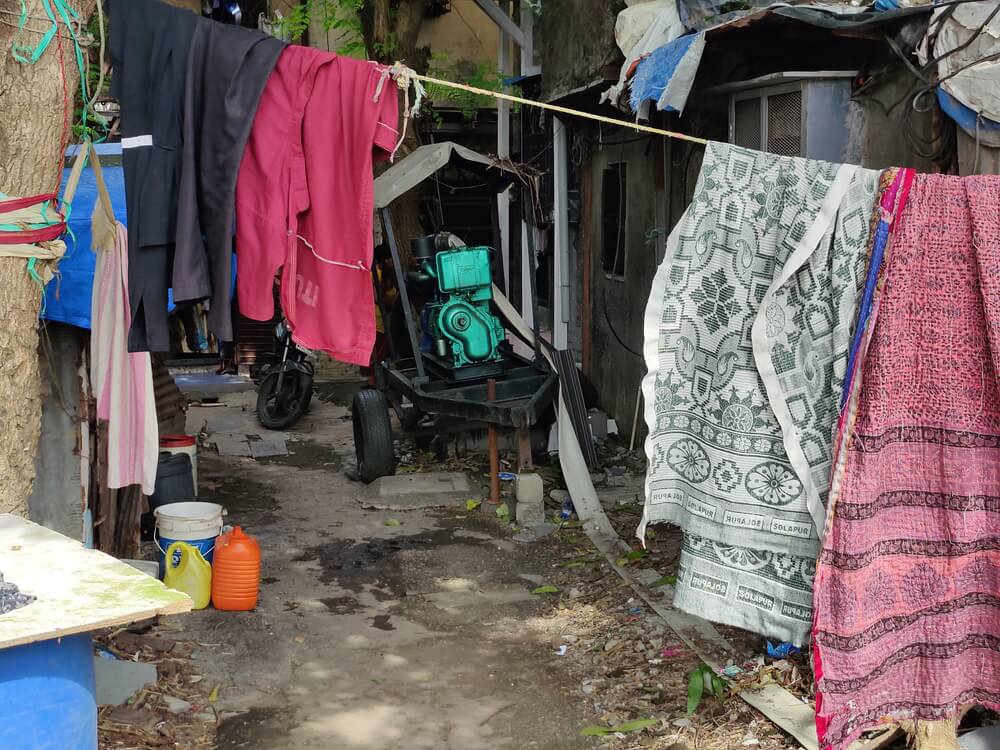
Photo: Shivani Dave
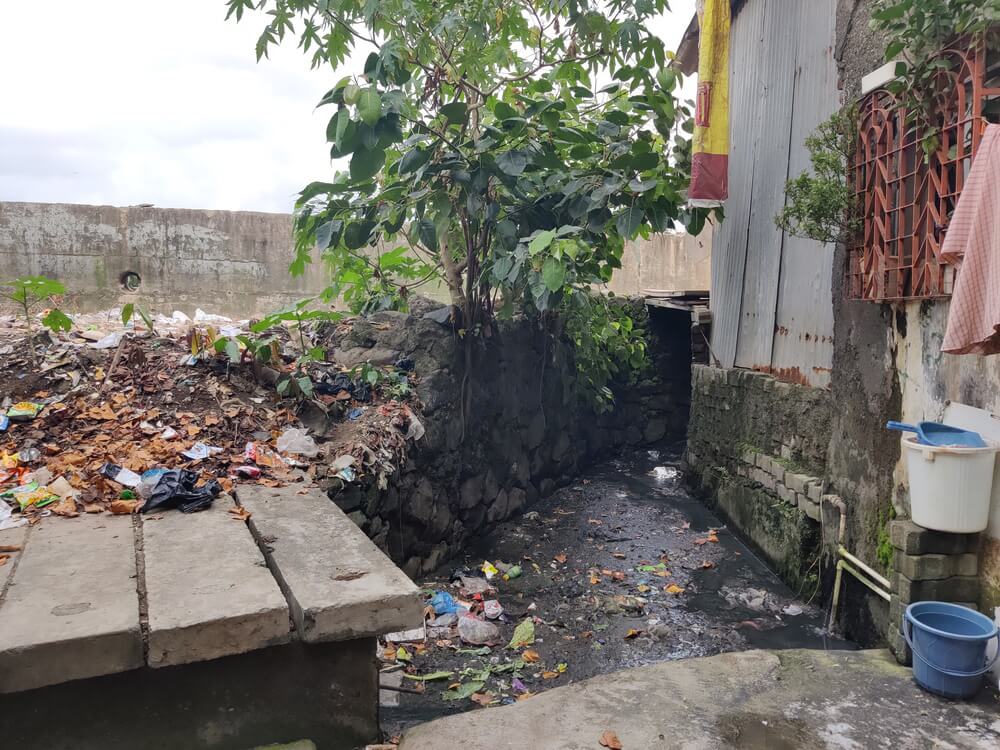
Photo: Jashvitha Dhagey
Rani Sabne, 40
Resident of Kranti Nagar settlement
I have lived here for so long but now we’re being told to shift. Mithi has not flooded in the past two years, at least not here in Kranti Nagar. And people who complain about the garbage, the smell and the flooding are the same people who throw trash into the river — what else do they expect when the water rises? If you throw trash in your backyard it is bound to come back to you. We have to deal with mosquito menace too.
There are many cases of skin problems and flu here. Many are being treated for ringworm. The drains behind our houses are supposed to empty into the Mithi, but are also choked by garbage and muck — it smells.
Resettlement and rehabilitation by the Slum Rehabilitation Authority (SRA) is underway. Around 600 families are scheduled to move out this week to a project in Vidyavihar. Around 100 or so shifted there today, but the houses there are much smaller than the houses we live in. We have been promised one house per family. As our houses are on airport land, we know we will have to accept the houses we are given. Where else will we go?
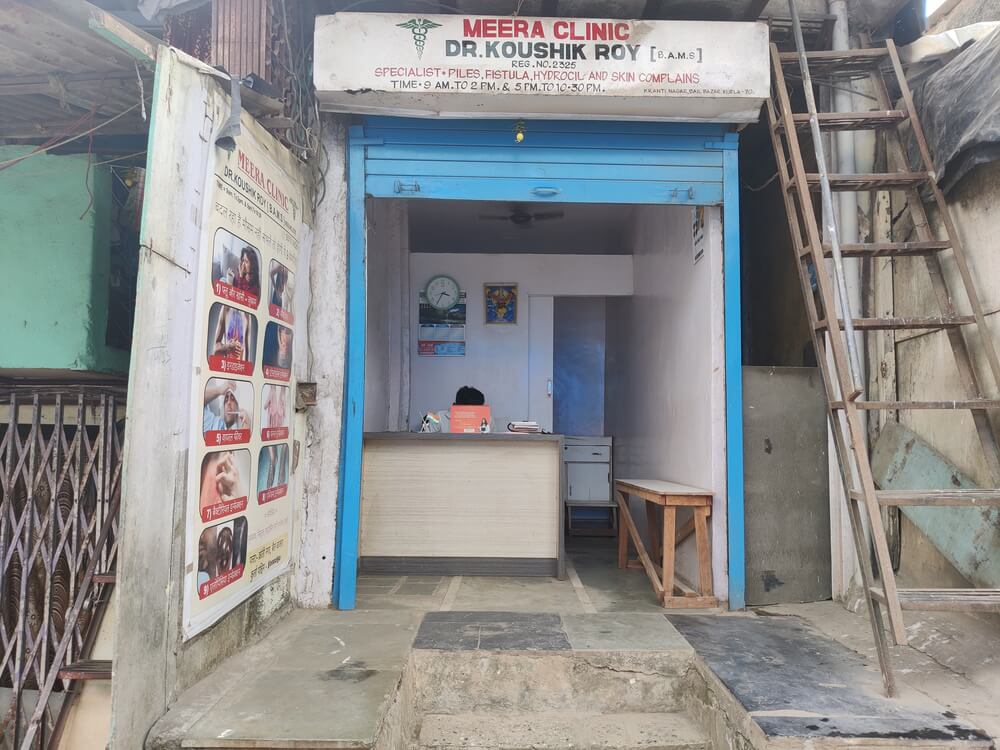
Photo: Jashvitha Dhagey
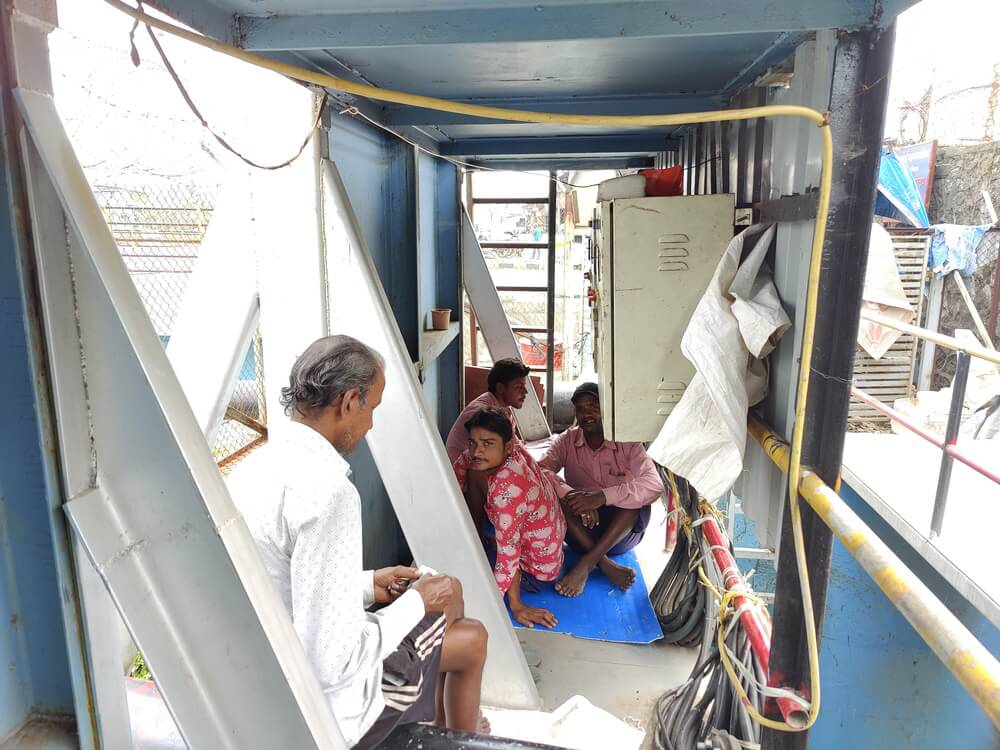
Photo: Shivani Dave
Shivkumar (50), Jai Singh (28), Krishna Murari (50)
Pump workers
The government has kept us here to monitor three pumps which ensure that the water flows from the airport area into the Mithi — we only work here in the monsoon because we have to ensure it does not flood. We work as farm labourers in Uttar Pradesh whenever there is work available there. We earn Rs 11,000 a month to stay here day and night – sometimes we sleep here, right above the pump even when it’s raining to keep a watch on the water level.
There is so much trash that comes through and gets stuck in the gates, it does not allow the water to flow. When that happens, we use a stick or go down and remove it manually allowing the water to flow to the other side. Nobody comes to clean the trash at this pumping station, so our only choice is to let it flow with the river.
Jashvitha Dhagey is a multimedia journalist and researcher. She developed a deep interest in the way cities function, watching Mumbai at work. She holds a post-graduate diploma in Social Communications Media from Sophia Polytechnic. She loves to watch and chronicle the multiple interactions between people, between people and power, and society and media.
Shivani Dave is an architect, writer and illustrator interested in exploring the intersection of architecture and social sciences. After graduating in architecture from Mumbai, and in media from the London School of Journalism, she is applying the fundamentals of architectural research and writing within urban contexts to develop phenomenological ideas about life in cities.
Cover photo: Shivani Dave

